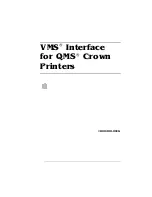
Updating data
447
Reviewing the code
The following table describes the code and its function:
Creating an update action page with cfquery
For more complicated updates, you can use a SQL UPDATE statement in a
cfquery
tag instead
of a
cfupdate
tag. The SQL UPDATE statement is more flexible for complicated updates.
The following procedure assumes that you have created the update_action.cfm page as described
in
“Creating an update action page with cfupdate” on page 445
.
To create an update page with cfquery:
1
In update_action.cfm, replace the
cfupdate
tag with the following highlighted
cfquery
code:
<html>
<head>
<title>Update Employee</title>
</head>
<body>
<cfif not isdefined("Form.Contract")>
<cfset form.contract = "No">
<cfelse>
<cfset form.contract = "Yes">
</cfif>
<!--- cfquery requires date formatting when retrieving from
Access. Use the left function when setting StartDate to trim
the ".0" from the date when it first appears from the
Access database --->
<cfquery name="UpdateEmployee" datasource="CompanyInfo">
UPDATE Employee
SET FirstName = '#Form.Firstname#',
LastName = '#Form.LastName#',
Dept_ID = #Form.Dept_ID#,
StartDate = '#left(Form.StartDate,19)#',
Salary = #Form.Salary#
WHERE Emp_ID = #Form.Emp_ID#
</cfquery>
<h1>Employee Updated</h1>
<cfoutput>
Code
Description
<cfif not isdefined("Form.Contract")>
<cfset Form.contract = "No">
<cfelse>
<cfset form.contract = "Yes">
</cfif>
Sets the value of Form.Contract to No if it is not
defined, or to Yes if it is defined. If the Contractor
check box is unchecked, no value is passed to the
action page; however, the database field must have
some value.
<cfupdate datasource="CompanyInfo"
tablename="Employee">
Updates the record in the database that matches
the primary key on the form (Emp_ID). Updates all
fields in the record with names that match the
names of form controls.
<cfoutput>
You have updated the information for
#Form.FirstName# #Form.LastName#
in the employee database.
</cfoutput>
Informs the user that the change was made
successfully.
Summary of Contents for COLDFUSION MX 61-DEVELOPING COLDFUSION MX
Page 1: ...Developing ColdFusion MX Applications...
Page 22: ...22 Contents...
Page 38: ......
Page 52: ...52 Chapter 2 Elements of CFML...
Page 162: ......
Page 218: ...218 Chapter 10 Writing and Calling User Defined Functions...
Page 250: ...250 Chapter 11 Building and Using ColdFusion Components...
Page 264: ...264 Chapter 12 Building Custom CFXAPI Tags...
Page 266: ......
Page 314: ...314 Chapter 14 Handling Errors...
Page 344: ...344 Chapter 15 Using Persistent Data and Locking...
Page 349: ...About user security 349...
Page 357: ...Security scenarios 357...
Page 370: ...370 Chapter 16 Securing Applications...
Page 388: ...388 Chapter 17 Developing Globalized Applications...
Page 408: ...408 Chapter 18 Debugging and Troubleshooting Applications...
Page 410: ......
Page 426: ...426 Chapter 19 Introduction to Databases and SQL...
Page 476: ...476 Chapter 22 Using Query of Queries...
Page 534: ...534 Chapter 24 Building a Search Interface...
Page 556: ...556 Chapter 25 Using Verity Search Expressions...
Page 558: ......
Page 582: ...582 Chapter 26 Retrieving and Formatting Data...
Page 668: ......
Page 734: ...734 Chapter 32 Using Web Services...
Page 760: ...760 Chapter 33 Integrating J2EE and Java Elements in CFML Applications...
Page 786: ...786 Chapter 34 Integrating COM and CORBA Objects in CFML Applications...
Page 788: ......
















































